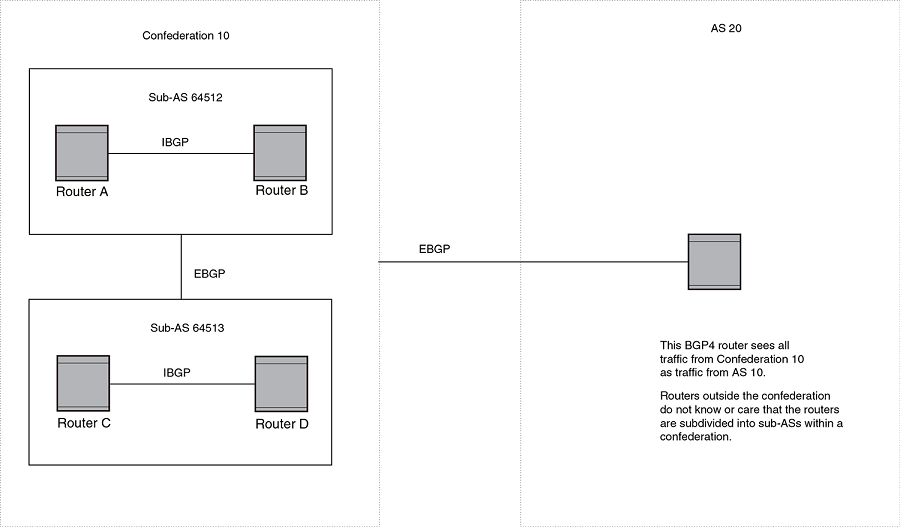BGP4 Confederations
A large autonomous system (AS) can be divided into multiple sub-autonomous (sub-AS) systems and grouped into one BGP4 confederation.
Each sub-AS system must be uniquely identified in the confederation AS by a sub-AS system number. In each sub-AS system, all the rules of internal BGP (iBGP) apply. For example, all BGP routers in the sub-AS system must be fully meshed. Although eBGP is used between sub-AS systems, the sub-AS systems in the confederation exchange routing information like iBGP peers. Next hop, Multi Exit Discriminator (MED), and local preference information is preserved when it crosses sub-AS system boundaries. To the outside world, a confederation looks like one AS.
The AS path list is a loop-avoidance mechanism used to detect routing updates that leave one sub-AS system and attempt to re-enter the same sub-AS system. A routing update that attempts to re-enter the sub-AS system from which it originated is detected because the sub-AS system sees its own system number listed in the update's AS path.

In this example, four devices are configured into two sub-AS systems, each containing two of the devices. The sub-AS are members of confederation 10. Devices in a sub-AS must be fully meshed and communicate using iBGP. In this example, devices A and B use iBGP to communicate. Devices C and D also use IBGP. However, the sub-AS systems communicate with one another using eBGP. For example, device A communicates with device C using eBGP. The devices in the confederation communicate with other autonomous systems using eBGP.
Devices in other ASs are unaware that devices A through D are configured in a confederation. In fact, when devices in confederation 10 send traffic to devices in other ASs, the confederation ID is the same as the AS number for the devices in the confederation. Thus, devices in other ASs see traffic as coming from AS 10 and are unaware that the devices in AS 10 are subdivided into sub-AS systems in a confederation.

